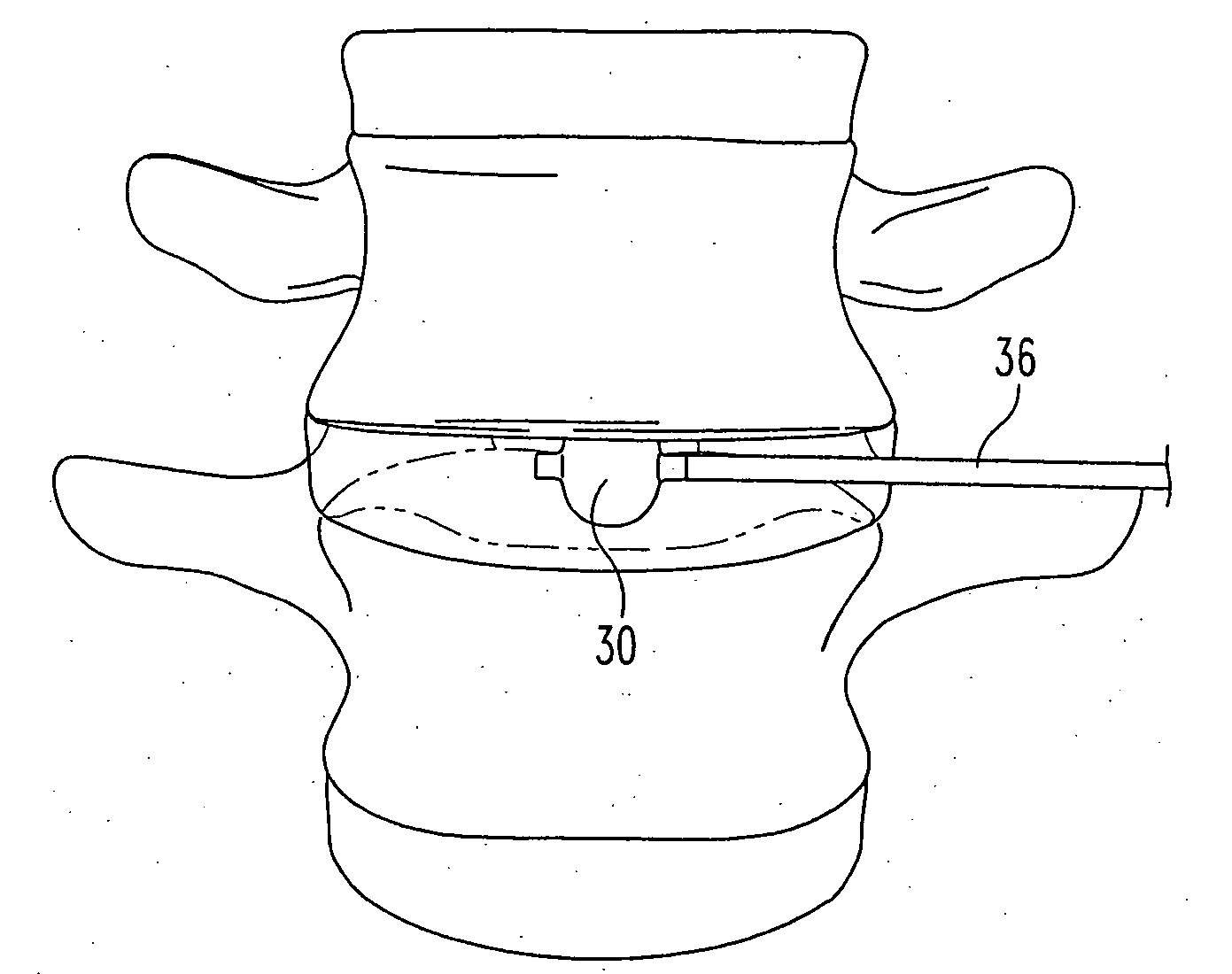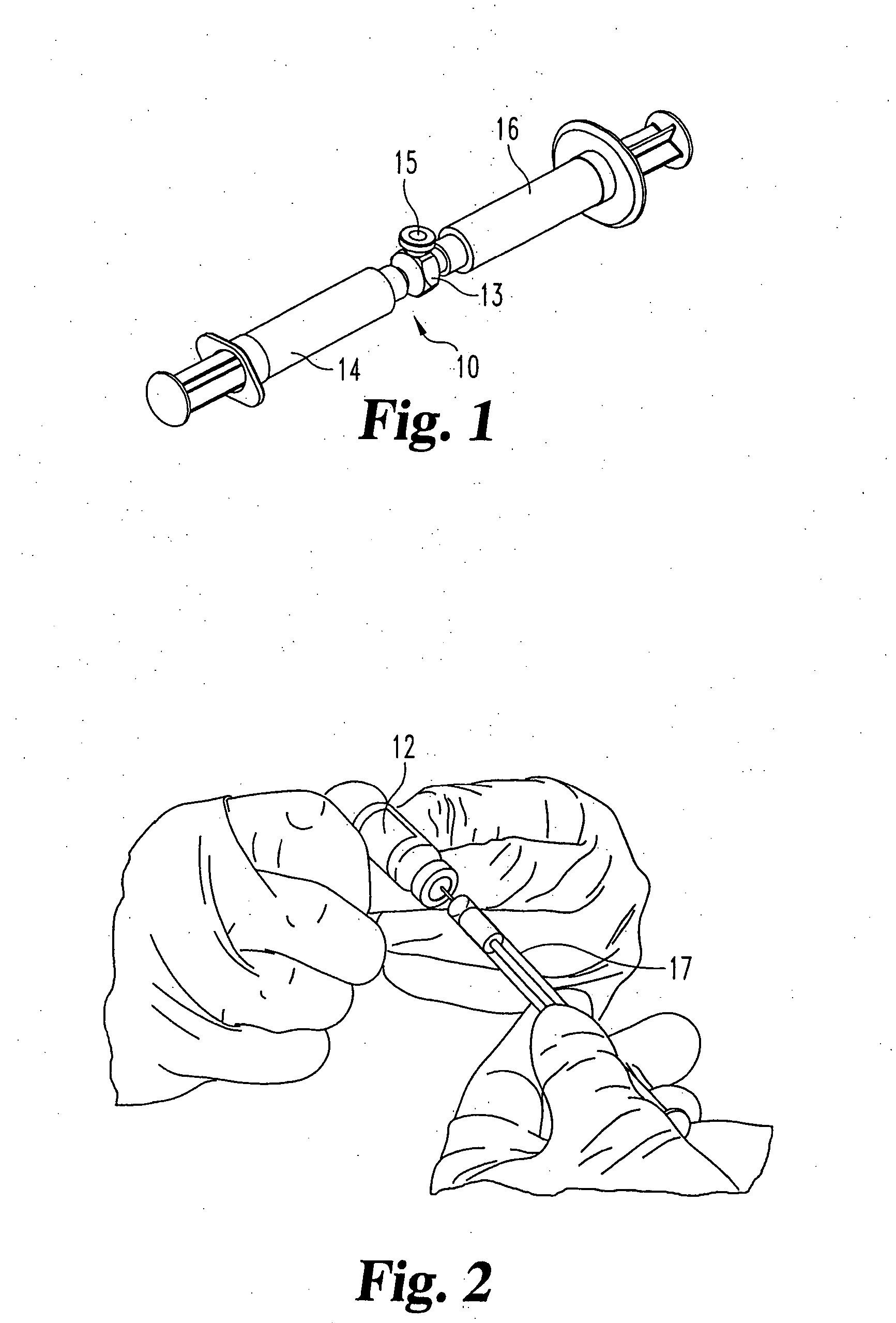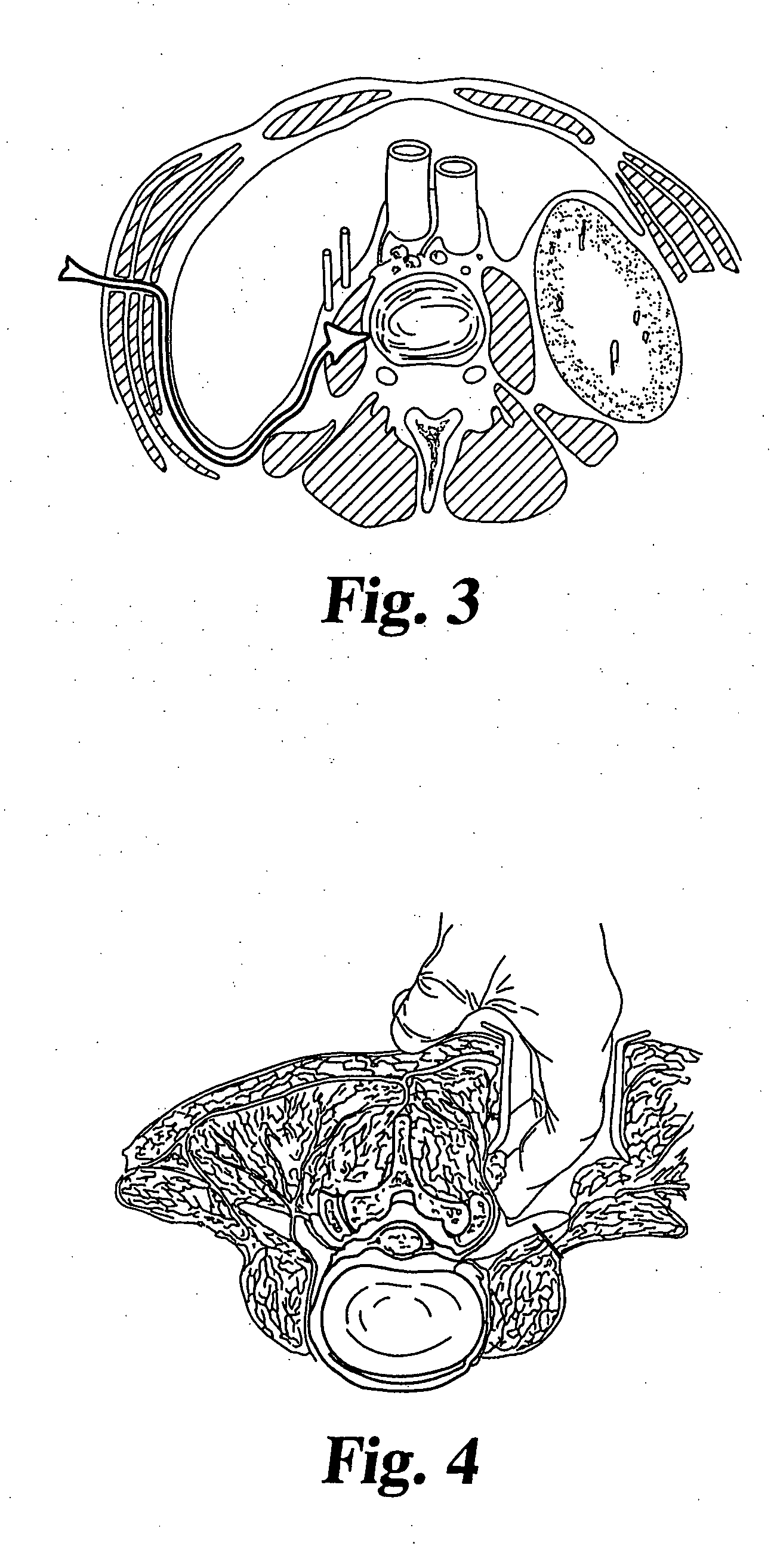Methods for treating defects and injuries of an intervertebral disc
a technology of intervertebral discs and treatment methods, applied in the field of spine systems and methods, can solve the problems of uncontrolled leakage, affecting the treatment effect, and causing the potential for the prosthetic fluid to ooze or seep out of the disc spa
- Summary
- Abstract
- Description
- Claims
- Application Information
AI Technical Summary
Benefits of technology
Problems solved by technology
Method used
Image
Examples
Embodiment Construction
[0037] For the purposes of promoting an understanding of the principles of the invention, reference will now be made to the embodiments illustrated in the drawings and described in the following written specification. It is understood that no limitation to the scope of the invention is thereby intended. It is further understood that the present invention includes any alterations and modifications to the illustrated embodiments and includes further applications of the principles of the invention as would normally occur to one skilled in the art to which this invention pertains.
[0038] In one embodiment of the invention, adjacent vertebral bodies are distracted (by a non compliant balloon) at a predetermined pressure, such as at 200 psi (13 atmospheres). Using a non-compliant balloon restricts the lateral dimension of the balloon and ensures that there is no lateral loading, or pressurization of the annulus, thereby avoiding the risk of damaging the annulus. The balloon (and thereby t...
PUM
 Login to View More
Login to View More Abstract
Description
Claims
Application Information
 Login to View More
Login to View More - R&D
- Intellectual Property
- Life Sciences
- Materials
- Tech Scout
- Unparalleled Data Quality
- Higher Quality Content
- 60% Fewer Hallucinations
Browse by: Latest US Patents, China's latest patents, Technical Efficacy Thesaurus, Application Domain, Technology Topic, Popular Technical Reports.
© 2025 PatSnap. All rights reserved.Legal|Privacy policy|Modern Slavery Act Transparency Statement|Sitemap|About US| Contact US: help@patsnap.com



